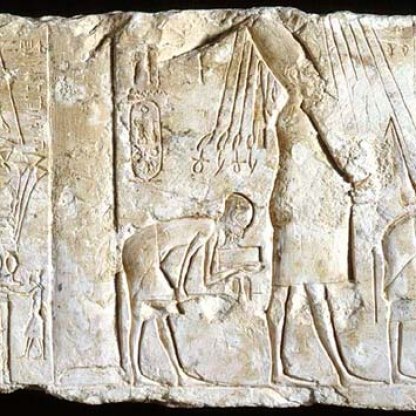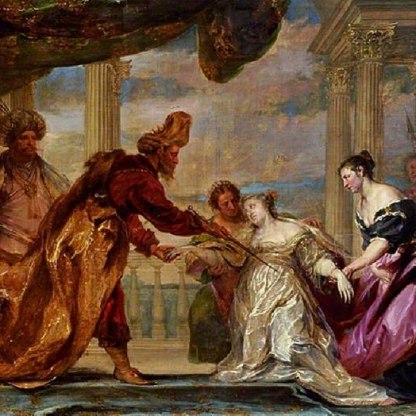Amarna Art
Alongside the religious innovations that Amenhotep III and Akhenaten introduced, there emerged a new style in Egyptian art.
It scarcely shows up on the relief under discussion, but the appearance of Akhenaten himself in official depictions was remarkable and unprecedented. He is shown with a bulbous head that rests upon a long and slender neck. His chin juts, his nose is broad and long, his lips thick and protuberant. His body is effeminate, with particular emphasis on the breasts, buttocks and thighs. It has been suggested that Akhenaten suffered from a condition known today as Marfan’s Syndrome, and that this was reflected in his official image.

But his odd appearance seems to have been emulated in depictions of his courtiers. An unfinished and much abraded limestone head in the Fitzwilliam [E.GA.4524.1943], depicts one of the royal Amarna women, perhaps even Akhenaten’s wife Nefertiti.

Another relief sculpture in the Fitzwilliam, [E.GA.4514.1943], shows that even the king’s army were represented in this new way. The soldier on the left has the same bulbous head with long, sloping forehead and jutting chin, the same pronounced belly and skinny limbs, as his ruler.
Another way in which the art produced under Akhenaten and his father broke from precedent was in its frequent depiction of royal family life. Women had always been depicted in Egyptian art, but never so often, nor on so large a scale. An unfinished carved carnelian in the Fitzwilliam, below [E.GA.4606.1943], shows Akhenaten embracing and kissing his wife Nefertiti, while each puts a free arm around a child. It is a remarkably intimate subject for Egyptian art, although other carvings from Amarna also show the royal couple embracing.

Three years after Akhenaten’s death, the royal capital of Egypt moved back to Memphis, and the traditional gods were restored. Much of the art produced under Akhenaten was systematically destroyed or re-used. It is all the more ironic, then, that a beautifully preserved bust of his wife Nefertiti, now in the Berlin Museum, has today become an icon of Egyptian beauty for any age or reign.
Other highlight objects you might like
Other pathways and stories you might like
Sign up to our emails
Be the first to hear about our news, exhibitions, events and more…






